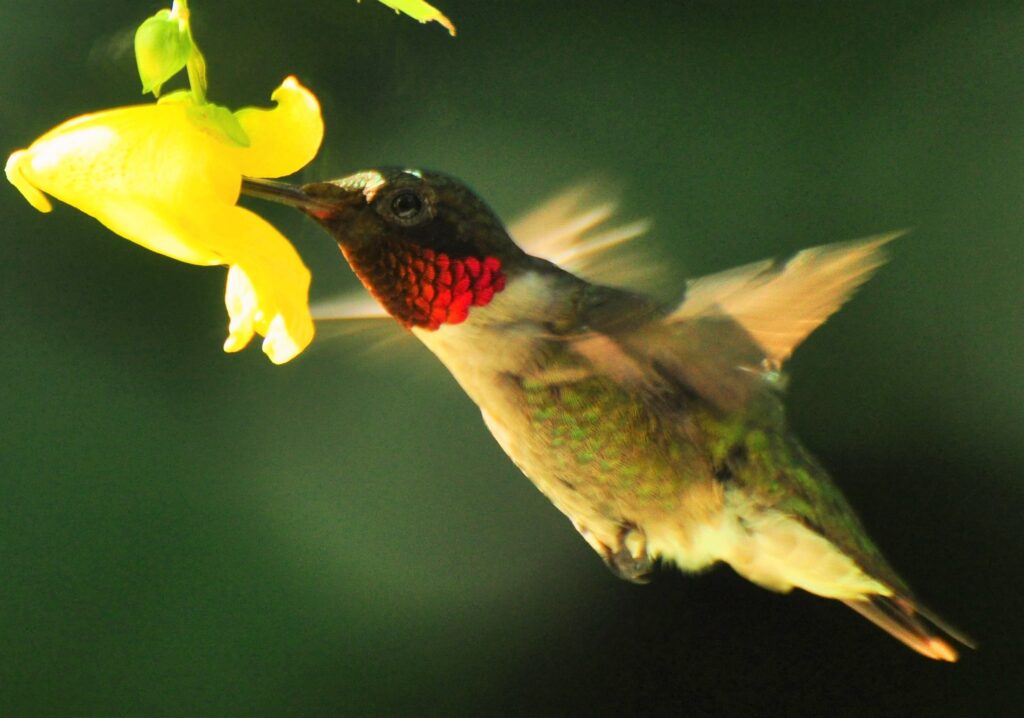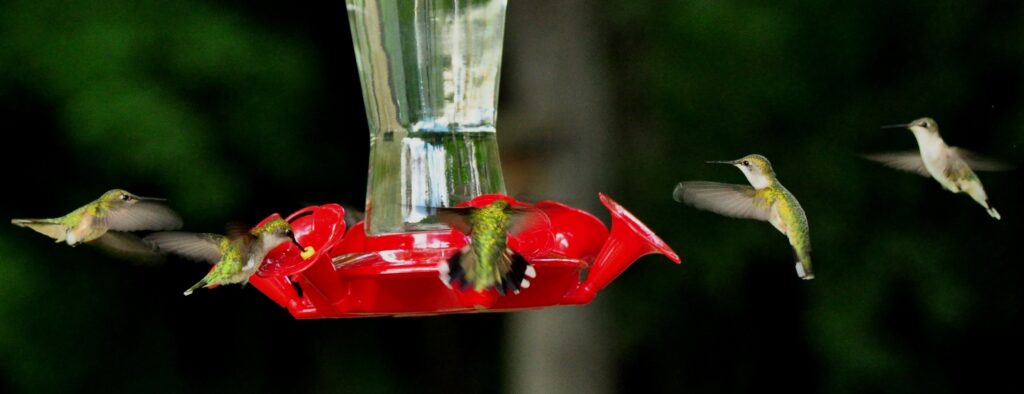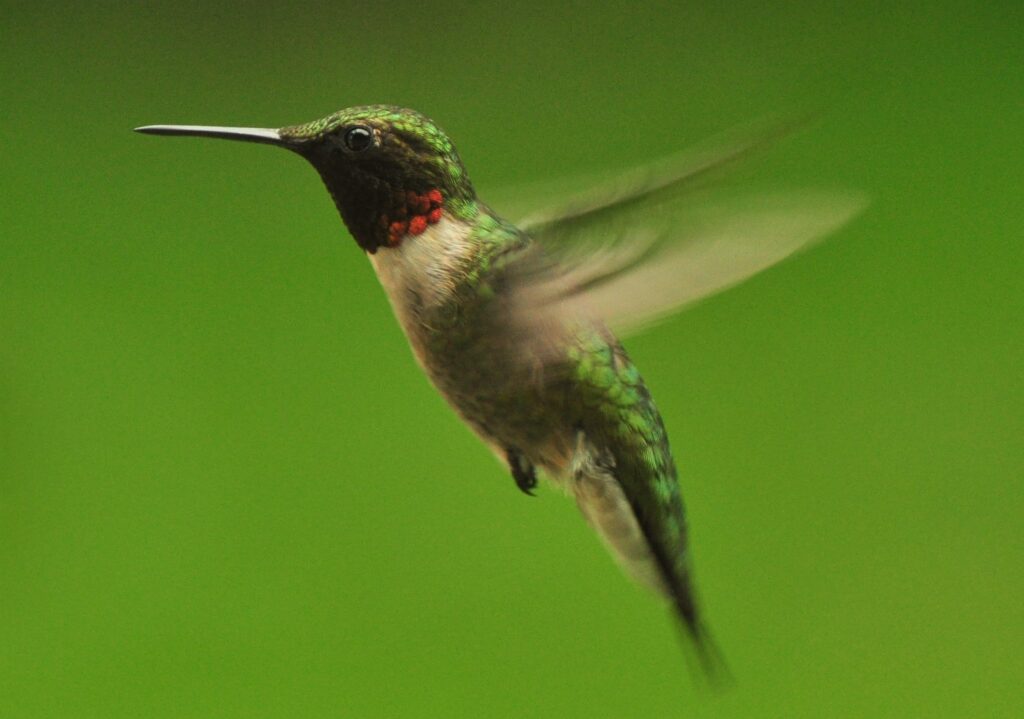Photography courtesy of Lowell Washburn, all rights reserved.
The ruby-throated hummingbird is one of Iowa’s most endearing examples of backyard birdlife. Although hummingbirds nest throughout the state, they are never more plentiful than during fall migration. Beginning in late August, visitors from as far away as northern Minnesota, Wisconsin, and Ontario, Canada will have begun arriving in Iowa. Although hummingbird numbers usually peak around mid-September, the migration will continue at reduced levels until withering frosts drive the last stragglers southward. Most hummingbirds will migrate to Central America. Some travel even farther.

During fall migration, hummingbirds may consume up to half their weight in natural flower nectar [sugar] each day. In Iowa, late blooming patches of jewelweed provide preferred feeding areas. Outdoor enthusiasts can aid in the search for energy by maintaining backyard feeders. Feeders allow hummingbirds to save time and conserve energy by providing migrants with unlimited quantities of high-octane fuel in one spot. For traveling ruby-throats, feeders are worth their weight in gold.

For southbound hummingbirds, the completion of the fall migration is an amazing feat. The most grueling phase of the annual fall flight begins on the shores of America’s southern coastline. Guided by starry constellations and powered by wings churning at upwards of 50 beats per second, hummingbirds leave the Texas mainland and head directly across the Gulf of Mexico. Exhausting stored fuel reserves and pushing physical endurance to the limit; the birds will cross the entire watery expanse in a single nonstop 500-mile, nighttime flight. The flight is an incredible achievement for a bird weighing less than a quarter of an ounce and with a wingspan of only four inches.


 Susan Judkins Josten
Susan Judkins Josten Rudi Roeslein
Rudi Roeslein Elyssa McFarland
Elyssa McFarland Mark Langgin
Mark Langgin Adam Janke
Adam Janke Joe Henry
Joe Henry Sue Wilkinson
Sue Wilkinson Tom Cope
Tom Cope Kristin Ashenbrenner
Kristin Ashenbrenner Joe Wilkinson
Joe Wilkinson Dr. Tammy Mildenstein
Dr. Tammy Mildenstein Sean McMahon
Sean McMahon